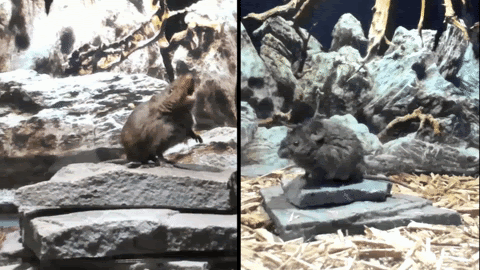

Good morning, folks! This is my last edition of Morning Rounds. Starting Monday, Shraddha Chakradhar will get you ahead of the day's news. There's a note from me at the end of this newsletter — but first, here's what you need to know about health and medicine today.
Lab Chat: What singing mice can show us about human conversation
FIRST THERE WAS SONNY AND CHER, THEN JUSTIN AND KELLY, AND NOW, RALPH AND CHARLIE. (NYU LANGONE HEALTH)
In the cloud forests of Central America, “singing” mice chatter back and forth in dueling duets. Scientists suspect those mice could hold clues about how humans carry out conversations — and what happens in the brain to cause communication disorders. Here's what NYU Langone's Michael Long and Arkarup Banerjee told me about their new research, published in Science.
What did you set out to study?
Humans are really good at conversation. When one speaker finishes and another picks up, it’s just a fifth of a second on average. That ability to communicate back and forth is called turn-taking. This works differently in some developmental disorders and language deficits. We wanted to understand how this communication works. Our star students, lab mice, lack this ability. But these singing mice have that same rapid back and forth, often in the context negotiating territory.
What did you see the singing mice do?
They’re polite. They don’t sing on top of each other. We wanted to figure out how the brain accomplishes this. We found there are two parts of the interaction. One part of the brain allows them to create their own unique song, so I can listen to it and say “that sounds like Ralph” versus “that sounds like Charlie.” And another part of the brain allows the mice to coordinate their songs. We’re now looking for the human equivalent.





















.jpg)









No hay comentarios:
Publicar un comentario